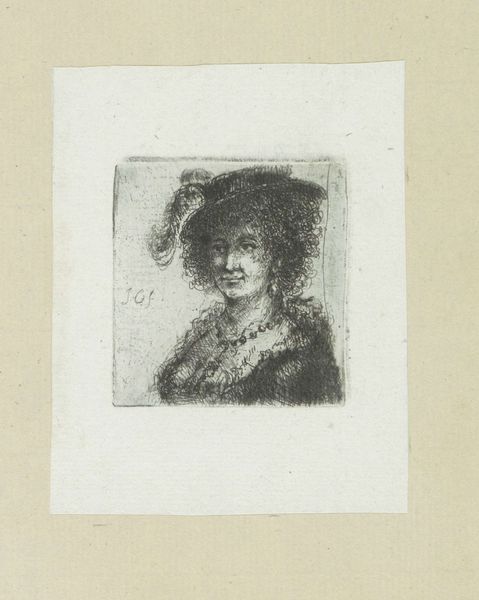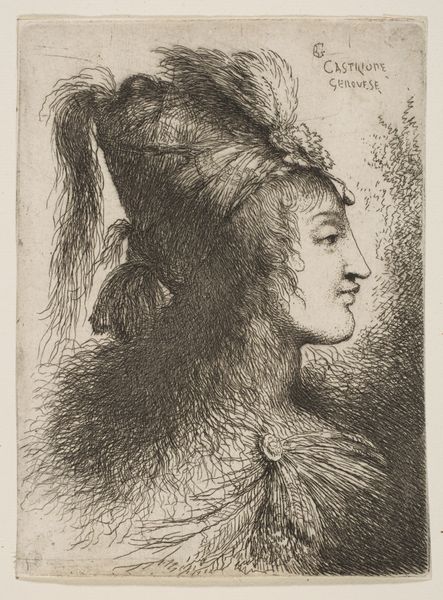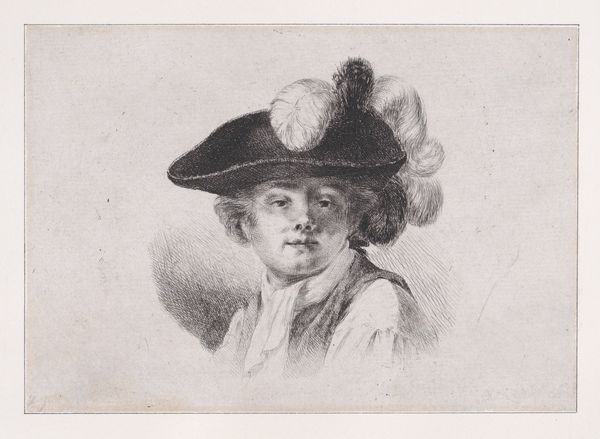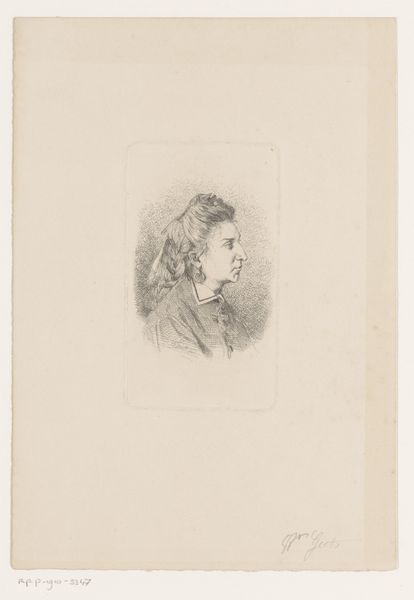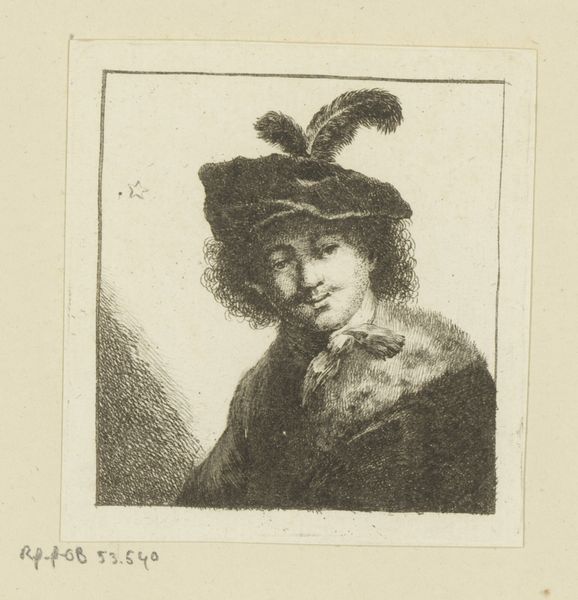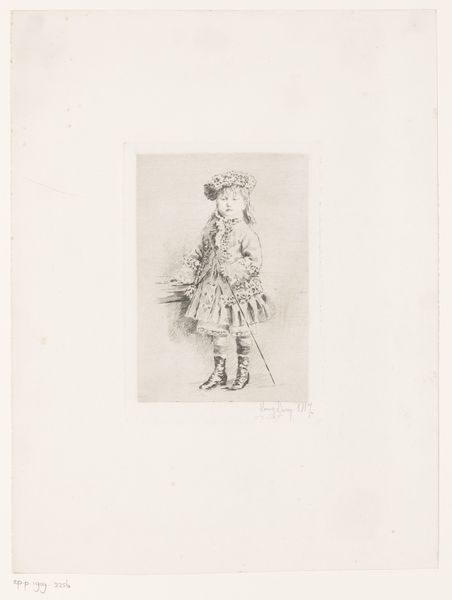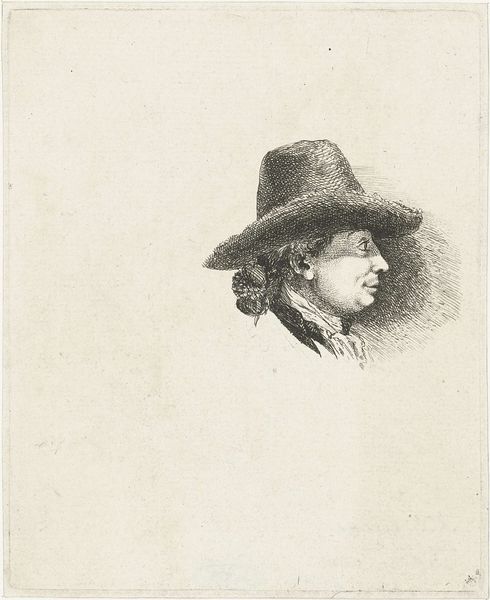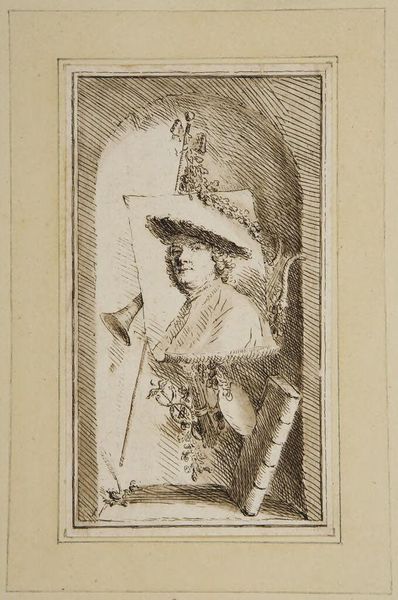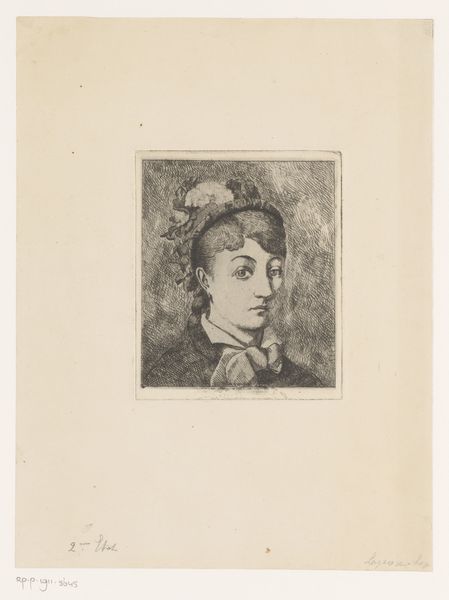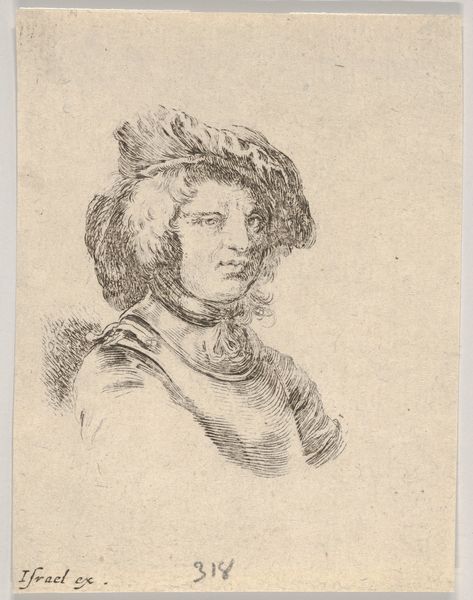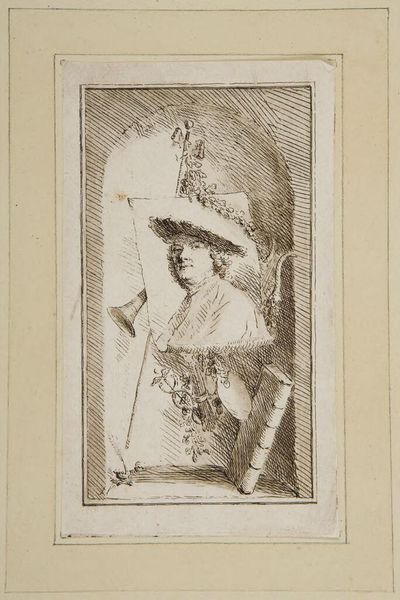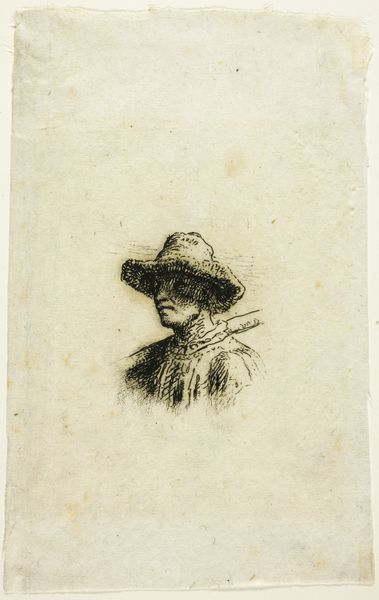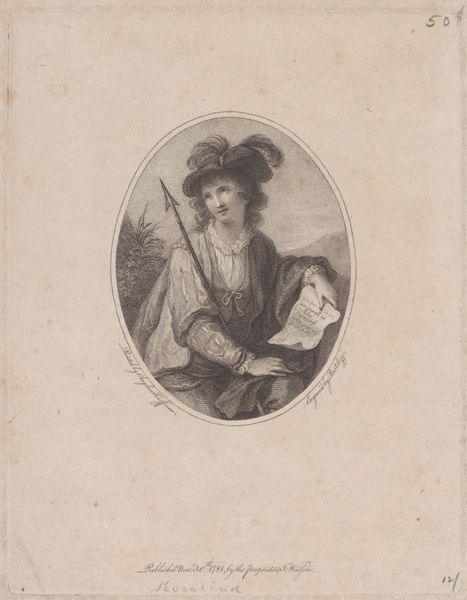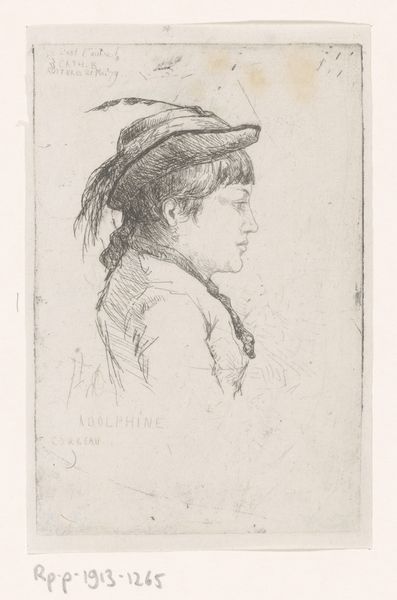
drawing, print, etching
#
portrait
#
pencil drawn
#
drawing
#
amateur sketch
#
aged paper
#
light pencil work
# print
#
etching
#
pencil sketch
#
old engraving style
#
personal sketchbook
#
sketchbook drawing
#
pencil work
#
academic-art
#
sketchbook art
Dimensions: height 68 mm, width 46 mm
Copyright: Rijks Museum: Open Domain
Curator: It feels…sketchy, in the best possible way. Like a stolen moment, a glimpse. There’s a certain rawness, an immediacy that draws you in. Editor: Indeed. What you’re sensing is perfectly captured in Johann Andreas Benjamin Nothnagel's etching, "Man met muts met veer," dating back to 1771. It presents a striking image through what I'd describe as almost aggressive cross-hatching. Curator: Aggressive? I wouldn’t say aggressive… Intense, perhaps. Determined. It makes me wonder who he was. Editor: Notice how the hatching is denser around the face, hat, and coat, almost obscuring the details. It adds layers of texture, symbolizing the complexities of identity. The feather in the hat is barely suggested, isn’t it? As a signifier of rank or profession, it's almost discarded, blending with the shadow. Curator: And the expression – that quiet gaze into the middle distance… I find that really intriguing. It feels melancholy but hopeful, if that makes sense. A sort of Romantic yearning before Romanticism really got going. Editor: Ah, the symbols of aspiration. In the eighteenth century, these items and accoutrements represented not merely adornment but also the narratives constructed around masculinity. Note too the rough hewn paper. The artist knew these materials had visual stories all their own. The work appears hasty and free while remaining highly intentional, almost performative. Curator: Right. But the unfinished feel gives the piece its charm, don’t you think? Editor: Undoubtedly. We’re given an impression of how these stories are rendered complete and real, and of their vulnerability, as if caught during fleeting, intimate acts. Curator: In the end, though, it makes me ponder the fleeting nature of perception, what the artist noticed at that particular moment. Perhaps there’s an elusive story behind that face which lingers and continues to ignite questions. Editor: I think, to your point, that its evocative rawness leaves viewers not merely observing but actually seeing and perceiving. What remains incomplete in line finds fulfillment through observation.
Comments
No comments
Be the first to comment and join the conversation on the ultimate creative platform.
